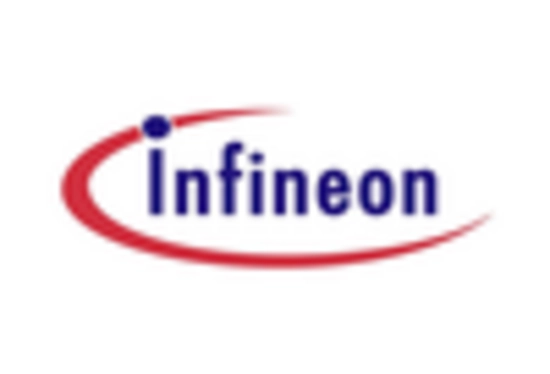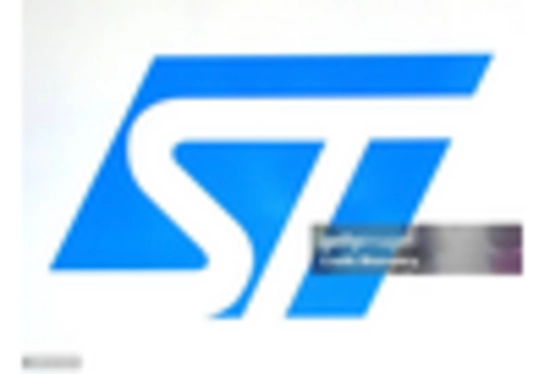-
EXECUTIVE SUMMARY
-
MARKET INTRODUCTION
-
DEFINITION
-
SCOPE OF THE STUDY
-
RESEARCH OBJECTIVE
-
MARKET STRUCTURE
-
RESEARCH METHODOLOGY
-
OVERVIEW
-
DATA FLOW
- DATA MINING PROCESS
-
PURCHASED DATABASE:
-
SECONDARY SOURCES:
- SECONDARY RESEARCH DATA FLOW:
-
PRIMARY RESEARCH:
- PRIMARY RESEARCH DATA FLOW:
- PRIMARY RESEARCH: NUMBER OF INTERVIEWS CONDUCTED
- PRIMARY RESEARCH: REGIONAL COVERAGE
-
APPROACHES FOR MARKET SIZE ESTIMATION:
- TRADE ANALYSIS APPROACH
-
DATA FORECASTING
- DATA FORECASTING TECHNIQUE
-
DATA MODELING
- MICROECONOMIC FACTOR ANALYSIS:
- DATA MODELING:
-
TEAMS AND ANALYST CONTRIBUTION
-
MARKET DYNAMICS
-
INTRODUCTION
-
DRIVERS
- GROWING DEMAND OF SILICON CARBIDE FROM SEMICONDUCTOR INDUSTRIES
- EXCELLENT PROPERTIES ASSOCIATED WITH SILICON CARBIDE SEMICONDUCTOR
-
RESTRAINTS
- FLUCTUATION IN THE PRICES OF RAW MATERIAL
-
OPPORTUNITY
- RISING INVESTMENT IN GLOBAL SILICON CARBIDE SEMICONDUCTOR MARKET
- GROWING MARKET OF ELECTRIC VEHICLES
-
IMPACT ANALYSIS OF COVID-19
- IMPACT ON SUPPLY CHAIN OF SILICON CARBIDE SEMICONDUCTOR
- IMPACT ON MARKET DEMAND OF SILICON CARBIDE SEMICONDUCTOR
-
MARKET FACTOR ANALYSIS
-
SUPPLY/VALUE CHAIN ANALYSIS
- RAW MATERIAL SUPPLIERS
- SILICON CARBIDE SEMICONDUCTORS MANUFACTURERS
- DISTRIBUTION CHANNELS
- END USE INDUSTRY
-
PORTER’S FIVE FORCES MODEL
- THREAT OF NEW ENTRANTS
- THREAT OF SUBSTITUTES
- BARGAINING POWER OF SUPPLIERS
- BARGAINING POWER OF BUYERS
- INTENSITY OF RIVALRY
-
GLOBAL SILICON CARBIDE SEMICONDUCTOR MARKET, BY APPLICATION
-
INTRODUCTION
-
UPS
-
SOLAR ENERGY SYSTEM
-
EV CHARGING
-
INDUSTRIAL DRIVES
-
OTHERS
-
GLOBAL SILICON CARBIDE SEMICONDUCTOR MARKET, BY COMPONENT
-
SCHOTTKY DIODE
-
FET/MOSFET TRANSISTORS
-
INTEGRATED CIRCUITS
-
RECTIFIERS/DIODES
-
POWER MODULES
-
OTHERS
-
GLOBAL SILICON CARBIDE SEMICONDUCTOR MARKET, BY END USE
-
AUTOMOTIVE
-
CONSUMER ELECTRONICS
-
AEROSPACE & DEFENSE
-
MEDICAL DEVICE
-
ENERGY & POWER
-
OTHERS
-
GLOBAL SILICON CARBIDE SEMICONDUCTOR MARKET, BY REGION
-
OVERVIEW
- U.S.
- CANADA
-
EUROPE
- GERMANY
- FRANCE
- UK
- SPAIN
- ITALY
- REST OF EUROPE
-
ASIA-PACIFIC
- CHINA
- INDIA
- JAPAN
- SOUTH KOREA
- REST OF ASIA-PACIFIC
-
LATIN AMERICA
- BRAZIL
- ARGENTINA
- REST OF LATIN AMERICA
-
MIDDLE EAST & AFRICA
- GCC COUNTRIES
- SOUTH AFRICA
- REST OF MIDDLE EAST & AFRICA
-
COMPETITIVE LANDSCAPE
-
INTRODUCTION
-
COMPETITION DASHBOARD
-
MARKET SHARE ANALYSIS, 2022
-
COMPETITIVE BENCHMARKING
-
LEADING PLAYERS IN TERMS OF THE NUMBER OF DEVELOPMENTS IN THE SILICON CARBIDE SEMICONDUCTOR MARKET
-
LIST OF KEY PLAYERS, BY COUNTRY
-
COMPARATIVE ANALYSIS: KEY PLAYERS FINANCIAL, 2022
-
COMPETITIVE LANDSCAPE FOR SILICON CARBIDE, CRYSTAL GROWING TECHNOLOGY AND INGOT MAKER OF SILICON CARBIDE
-
LIST OF INGOT MAKER OF SILICON CARBIDE
-
LIST OF COMPANIES FOR EQUIPMENT MAKER FOR CRYSTAL GROWING TECHNOLOGY
-
CRYSTAL GROWING COMPANIES FOR SILICON CARBIDE- OVERVIEW
-
COMPANY PROFILES
-
ALLEGRO MICROSYSTEMS, INC
- COMPANY OVERVIEW
- FINANCIAL OVERVIEW
- PRODUCTS OFFERED
- KEY DEVELOPMENTS
- SWOT ANALYSIS
- KEY STRATEGY
-
INFINEON TECHNOLOGIES AG
- COMPANY OVERVIEW
- FINANCIAL OVERVIEW
- PRODUCTS OFFERED
- KEY DEVELOPMENTS
- SWOT ANALYSIS
- KEY STRATEGY
-
ROHM CO., LTD..
- COMPANY OVERVIEW
- FINANCIAL OVERVIEW
- PRODUCTS OFFERED
- KEY DEVELOPMENTS
- SWOT ANALYSIS
- KEY STRATEGY
-
SEMICONDUCTOR COMPONENTS INDUSTRIES, LLC
- COMPANY OVERVIEW
- FINANCIAL OVERVIEW
- PRODUCTS OFFERED
- KEY DEVELOPMENTS
- SWOT ANALYSIS
- KEY STRATEGY
-
WOLFSPEED, INC
- COMPANY OVERVIEW
- FINANCIAL OVERVIEW
- PRODUCTS OFFERED
- KEY DEVELOPMENTS
- SWOT ANALYSIS
- KEY STRATEGY
-
FUJI ELECTRIC CO., LTD.
- COMPANY OVERVIEW
- FINANCIAL OVERVIEW
- PRODUCTS OFFERED
- SWOT ANALYSIS
- KEY STRATEGY
-
MITSUBISHI ELECTRIC CORPORATION
- COMPANY OVERVIEW
- FINANCIAL OVERVIEW
- PRODUCTS OFFERED
- KEY DEVELOPMENTS
- SWOT ANALYSIS
- KEY STRATEGY
-
TOSHIBA
- COMPANY OVERVIEW
- FINANCIAL OVERVIEW
- PRODUCTS OFFERED
- KEY DEVELOPMENTS
- SWOT ANALYSIS
- KEY STRATEGY
-
TT ELECTRONICS
- COMPANY OVERVIEW
- FINANCIAL OVERVIEW
- PRODUCTS OFFERED
- KEY DEVELOPMENTS
- SWOT ANALYSIS
- KEY STRATEGY
-
GENESIC SEMICONDUCTOR INC.
- COMPANY OVERVIEW
- FINANCIAL OVERVIEW
- PRODUCTS OFFERED
- KEY DEVELOPMENTS
- SWOT ANALYSIS
- KEY STRATEGY
-
POWEREX INC.
- COMPANY OVERVIEW
- FINANCIAL OVERVIEW
- PRODUCTS OFFERED
- KEY DEVELOPMENTS
- SWOT ANALYSIS
- KEY STRATEGY
-
STMICROELECTRONICS
- COMPANY OVERVIEW
- FINANCIAL OVERVIEW
- PRODUCTS OFFERED
- KEY DEVELOPMENTS
- SWOT ANALYSIS
- KEY STRATEGY
-
LIST OF TABLES
-
QFD MODELING FOR MARKET SHARE ASSESSMENT
-
SILICON CARBIDE SEMICONDUCTOR MARKET VALUE, BY APPLICATION, 2018-2035 (USD MILLION)
-
SILICON CARBIDE SEMICONDUCTOR MARKET VOLUME, BY APPLICATION, 2018-2035 (KILO TONS)
-
SILICON CARBIDE SEMICONDUCTOR MARKET, VALUE, BY COMPONENT, 2018-2035 (USD MILLION)
-
SILICON CARBIDE SEMICONDUCTOR MARKET, VOLUME, BY COMPONENT, 2018-2035 (KILO TONS)
-
SILICON CARBIDE SEMICONDUCTOR MARKET, VALUE, BY END USE, 2018-2035 (USD MILLION)
-
SILICON CARBIDE SEMICONDUCTOR MARKET, VOLUME, BY END USE, 2018-2035 (KILO TONS)
-
SILICON CARBIDE SEMICONDUCTOR MARKET VALUE, BY REGION, 2018-2035 (USD MILLION)
-
SILICON CARBIDE SEMICONDUCTOR MARKET VOLUME, BY REGION, 2018-2035 (KILO TONS)
-
NORTH AMERICA: SILICON CARBIDE SEMICONDUCTOR MARKET VALUE, BY COUNTRY, 2018-2035 (USD MILLION)
-
NORTH AMERICA: SILICON CARBIDE SEMICONDUCTOR MARKET VOLUME, BY COUNTRY, 2018-2035 (KILO TONS)
-
NORTH AMERICA: SILICON CARBIDE SEMICONDUCTOR MARKET VALUE, BY APPLICATION, 2018-2035 (USD MILLION)
-
NORTH AMERICA: SILICON CARBIDE SEMICONDUCTOR MARKET VOLUME, BY APPLICATION, 2018-2035 (KILO TONS)
-
NORTH AMERICA: SILICON CARBIDE SEMICONDUCTOR MARKET VALUE, BY COMPONENT, 2018-2035 (USD MILLION)
-
NORTH AMERICA: SILICON CARBIDE SEMICONDUCTOR MARKET VOLUME, BY COMPONENT, 2018-2035 (KILO TONS)
-
NORTH AMERICA: SILICON CARBIDE SEMICONDUCTOR MARKET VALUE, BY END USE, 2018-2035 (USD MILLION)
-
NORTH AMERICA: SILICON CARBIDE SEMICONDUCTOR MARKET VOLUME, BY END USE, 2018-2035 (KILO TONS)
-
US: SILICON CARBIDE SEMICONDUCTOR MARKET VALUE, BY APPLICATION, 2018-2035 (USD MILLION)
-
US: SILICON CARBIDE SEMICONDUCTOR MARKET VOLUME, BY APPLICATION, 2018-2035 (KILO TONS)
-
US: SILICON CARBIDE SEMICONDUCTOR MARKET VALUE, BY COMPONENT, 2018-2035 (USD MILLION)
-
US: SILICON CARBIDE SEMICONDUCTOR MARKET VOLUME, BY COMPONENT, 2018-2035 (KILO TONS)
-
US: SILICON CARBIDE SEMICONDUCTOR MARKET VALUE, BY END USE, 2018-2035 (USD MILLION)
-
US: SILICON CARBIDE SEMICONDUCTOR MARKET VOLUME, BY END USE, 2018-2035 (KILO TONS)
-
CANADA: SILICON CARBIDE SEMICONDUCTOR MARKET VALUE, BY APPLICATION, 2018-2035 (USD MILLION)
-
CANADA: SILICON CARBIDE SEMICONDUCTOR MARKET VOLUME, BY APPLICATION, 2018-2035 (KILO TONS)
-
CANADA: SILICON CARBIDE SEMICONDUCTOR MARKET VALUE, BY COMPONENT, 2018-2035 (USD MILLION)
-
CANADA: SILICON CARBIDE SEMICONDUCTOR MARKET VOLUME, BY COMPONENT, 2018-2035 (KILO TONS)
-
CANADA: SILICON CARBIDE SEMICONDUCTOR MARKET VALUE, BY END USE, 2018-2035 (USD MILLION)
-
CANADA: SILICON CARBIDE SEMICONDUCTOR MARKET VOLUME, BY END USE, 2018-2035 (KILO TONS)
-
EUROPE: SILICON CARBIDE SEMICONDUCTOR MARKET VALUE, BY COUNTRY, 2018-2035 (USD MILLION)
-
EUROPE: SILICON CARBIDE SEMICONDUCTOR MARKET VOLUME, BY COUNTRY, 2018-2035 (KILO TONS)
-
EUROPE: SILICON CARBIDE SEMICONDUCTOR MARKET VALUE, BY APPLICATION, 2018-2035 (USD MILLION)
-
EUROPE: SILICON CARBIDE SEMICONDUCTOR MARKET VOLUME, BY APPLICATION, 2018-2035 (KILO TONS)
-
EUROPE: SILICON CARBIDE SEMICONDUCTOR MARKET VALUE, BY COMPONENT, 2018-2035 (USD MILLION)
-
EUROPE: SILICON CARBIDE SEMICONDUCTOR MARKET VOLUME, BY COMPONENT, 2018-2035 (KILO TONS)
-
EUROPE: SILICON CARBIDE SEMICONDUCTOR MARKET VALUE, BY END USE, 2018-2035 (USD MILLION)
-
EUROPE: SILICON CARBIDE SEMICONDUCTOR MARKET VOLUME, BY END USE, 2018-2035 (KILO TONS)
-
GERMANY: SILICON CARBIDE SEMICONDUCTOR MARKET VALUE, BY APPLICATION, 2018-2035 (USD MILLION)
-
GERMANY: SILICON CARBIDE SEMICONDUCTOR MARKET VOLUME, BY APPLICATION, 2018-2035 (KILO TONS)
-
GERMANY: SILICON CARBIDE SEMICONDUCTOR MARKET VALUE, BY COMPONENT, 2018-2035 (USD MILLION)
-
GERMANY: SILICON CARBIDE SEMICONDUCTOR MARKET VOLUME, BY COMPONENT, 2018-2035 (KILO TONS)
-
GERMANY: SILICON CARBIDE SEMICONDUCTOR MARKET VALUE, BY END USE, 2018-2035 (USD MILLION)
-
GERMANY: SILICON CARBIDE SEMICONDUCTOR MARKET VOLUME, BY END USE, 2018-2035 (KILO TONS)
-
FRANCE: SILICON CARBIDE SEMICONDUCTOR MARKET VALUE, BY APPLICATION, 2018-2035 (USD MILLION)
-
FRANCE: SILICON CARBIDE SEMICONDUCTOR MARKET VOLUME, BY APPLICATION, 2018-2035 (KILO TONS)
-
FRANCE: SILICON CARBIDE SEMICONDUCTOR MARKET VALUE, BY COMPONENT, 2018-2035 (USD MILLION)
-
FRANCE: SILICON CARBIDE SEMICONDUCTOR MARKET VOLUME, BY COMPONENT, 2018-2035 (KILO TONS)
-
FRANCE: SILICON CARBIDE SEMICONDUCTOR MARKET VALUE, BY END USE, 2018-2035 (USD MILLION)
-
FRANCE: SILICON CARBIDE SEMICONDUCTOR MARKET VOLUME, BY END USE, 2018-2035 (KILO TONS)
-
UK: SILICON CARBIDE SEMICONDUCTOR MARKET VALUE, BY APPLICATION, 2018-2035 (USD MILLION)
-
UK: SILICON CARBIDE SEMICONDUCTOR MARKET VOLUME, BY APPLICATION, 2018-2035 (KILO TONS)
-
UK: SILICON CARBIDE SEMICONDUCTOR MARKET VALUE, BY COMPONENT, 2018-2035 (USD MILLION)
-
UK: SILICON CARBIDE SEMICONDUCTOR MARKET VOLUME, BY COMPONENT, 2018-2035 (KILO TONS)
-
UK: SILICON CARBIDE SEMICONDUCTOR MARKET VALUE, BY END USE, 2018-2035 (USD MILLION)
-
UK: SILICON CARBIDE SEMICONDUCTOR MARKET VOLUME, BY END USE, 2018-2035 (KILO TONS)
-
SPAIN: SILICON CARBIDE SEMICONDUCTOR MARKET VALUE, BY APPLICATION, 2018-2035 (USD MILLION)
-
SPAIN: SILICON CARBIDE SEMICONDUCTOR MARKET VOLUME, BY APPLICATION, 2018-2035 (KILO TONS)
-
SPAIN: SILICON CARBIDE SEMICONDUCTOR MARKET VALUE, BY COMPONENT, 2018-2035 (USD MILLION)
-
SPAIN: SILICON CARBIDE SEMICONDUCTOR MARKET VOLUME, BY COMPONENT, 2018-2035 (KILO TONS)
-
SPAIN: SILICON CARBIDE SEMICONDUCTOR MARKET VALUE, BY END USE, 2018-2035 (USD MILLION)
-
SPAIN: SILICON CARBIDE SEMICONDUCTOR MARKET VOLUME, BY END USE, 2018-2035 (KILO TONS)
-
ITALY: SILICON CARBIDE SEMICONDUCTOR MARKET VALUE, BY APPLICATION, 2018-2035 (USD MILLION)
-
ITALY: SILICON CARBIDE SEMICONDUCTOR MARKET VOLUME, BY APPLICATION, 2018-2035 (KILO TONS)
-
ITALY: SILICON CARBIDE SEMICONDUCTOR MARKET VALUE, BY COMPONENT, 2018-2035 (USD MILLION)
-
ITALY: SILICON CARBIDE SEMICONDUCTOR MARKET VOLUME, BY COMPONENT, 2018-2035 (KILO TONS)
-
ITALY: SILICON CARBIDE SEMICONDUCTOR MARKET VALUE, BY END USE, 2018-2035 (USD MILLION)
-
ITALY: SILICON CARBIDE SEMICONDUCTOR MARKET VOLUME, BY END USE, 2018-2035 (KILO TONS)
-
REST OF EUROPE: SILICON CARBIDE SEMICONDUCTOR MARKET VALUE, BY APPLICATION, 2018-2035 (USD MILLION)
-
REST OF EUROPE: SILICON CARBIDE SEMICONDUCTOR MARKET VOLUME, BY APPLICATION, 2018-2035 (KILO TONS)
-
REST OF EUROPE: SILICON CARBIDE SEMICONDUCTOR MARKET VALUE, BY COMPONENT, 2018-2035 (USD MILLION)
-
REST OF EUROPE: SILICON CARBIDE SEMICONDUCTOR MARKET VOLUME, BY COMPONENT, 2018-2035 (KILO TONS)
-
REST OF EUROPE: SILICON CARBIDE SEMICONDUCTOR MARKET VALUE, BY END USE, 2018-2035 (USD MILLION)
-
REST OF EUROPE: SILICON CARBIDE SEMICONDUCTOR MARKET VOLUME, BY END USE, 2018-2035 (KILO TONS)
-
ASIA-PACIFIC: SILICON CARBIDE SEMICONDUCTOR MARKET VALUE, BY COUNTRY, 2018-2035 (USD MILLION)
-
ASIA-PACIFIC: SILICON CARBIDE SEMICONDUCTOR MARKET VOLUME, BY COUNTRY, 2018-2035 (KILO TONS)
-
ASIA-PACIFIC: SILICON CARBIDE SEMICONDUCTOR MARKET VALUE, BY APPLICATION, 2018-2035 (USD MILLION)
-
ASIA-PACIFIC: SILICON CARBIDE SEMICONDUCTOR MARKET VOLUME, BY APPLICATION, 2018-2035 (KILO TONS)
-
ASIA-PACIFIC: SILICON CARBIDE SEMICONDUCTOR MARKET VALUE, BY COMPONENT, 2018-2035 (USD MILLION)
-
ASIA-PACIFIC: SILICON CARBIDE SEMICONDUCTOR MARKET VOLUME, BY COMPONENT, 2018-2035 (KILO TONS)
-
ASIA-PACIFIC: SILICON CARBIDE SEMICONDUCTOR MARKET VALUE, BY END USE, 2018-2035 (USD MILLION)
-
ASIA-PACIFIC: SILICON CARBIDE SEMICONDUCTOR MARKET VOLUME, BY END USE, 2018-2035 (KILO TONS)
-
CHINA: SILICON CARBIDE SEMICONDUCTOR MARKET VALUE, BY APPLICATION, 2018-2035 (USD MILLION)
-
CHINA: SILICON CARBIDE SEMICONDUCTOR MARKET VOLUME, BY APPLICATION, 2018-2035 (KILO TONS)
-
CHINA: SILICON CARBIDE SEMICONDUCTOR MARKET VALUE, BY COMPONENT, 2018-2035 (USD MILLION)
-
CHINA: SILICON CARBIDE SEMICONDUCTOR MARKET VOLUME, BY COMPONENT, 2018-2035 (KILO TONS)
-
CHINA: SILICON CARBIDE SEMICONDUCTOR MARKET VALUE, BY END USE, 2018-2035 (USD MILLION)
-
CHINA: SILICON CARBIDE SEMICONDUCTOR MARKET VOLUME, BY END USE, 2018-2035 (KILO TONS)
-
INDIA: SILICON CARBIDE SEMICONDUCTOR MARKET VALUE, BY APPLICATION, 2018-2035 (USD MILLION)
-
INDIA: SILICON CARBIDE SEMICONDUCTOR MARKET VOLUME, BY APPLICATION, 2018-2035 (KILO TONS)
-
INDIA: SILICON CARBIDE SEMICONDUCTOR MARKET VALUE, BY COMPONENT, 2018-2035 (USD MILLION)
-
INDIA: SILICON CARBIDE SEMICONDUCTOR MARKET VOLUME, BY COMPONENT, 2018-2035 (KILO TONS)
-
INDIA: SILICON CARBIDE SEMICONDUCTOR MARKET VALUE, BY END USE, 2018-2035 (USD MILLION)
-
INDIA: SILICON CARBIDE SEMICONDUCTOR MARKET VOLUME, BY END USE, 2018-2035 (KILO TONS)
-
JAPAN: SILICON CARBIDE SEMICONDUCTOR MARKET VALUE, BY APPLICATION, 2018-2035 (USD MILLION)
-
JAPAN: SILICON CARBIDE SEMICONDUCTOR MARKET VOLUME, BY APPLICATION, 2018-2035 (KILO TONS)
-
JAPAN: SILICON CARBIDE SEMICONDUCTOR MARKET VALUE, BY COMPONENT, 2018-2035 (USD MILLION)
-
JAPAN: SILICON CARBIDE SEMICONDUCTOR MARKET VOLUME, BY COMPONENT, 2018-2035 (KILO TONS)
-
JAPAN: SILICON CARBIDE SEMICONDUCTOR MARKET VALUE, BY END USE, 2018-2035 (USD MILLION)
-
JAPAN: SILICON CARBIDE SEMICONDUCTOR MARKET VOLUME, BY END USE, 2018-2035 (KILO TONS)
-
SOUTH KOREA: SILICON CARBIDE SEMICONDUCTOR MARKET VALUE, BY APPLICATION, 2018-2035 (USD MILLION)
-
SOUTH KOREA: SILICON CARBIDE SEMICONDUCTOR MARKET VOLUME, BY APPLICATION, 2018-2035 (KILO TONS)
-
SOUTH KOREA: SILICON CARBIDE SEMICONDUCTOR MARKET VALUE, BY COMPONENT, 2018-2035 (USD MILLION)
-
SOUTH KOREA: SILICON CARBIDE SEMICONDUCTOR MARKET VOLUME, BY COMPONENT, 2018-2035 (KILO TONS)
-
SOUTH KOREA: SILICON CARBIDE SEMICONDUCTOR MARKET VALUE, BY END USE, 2018-2035 (USD MILLION)
-
SOUTH KOREA: SILICON CARBIDE SEMICONDUCTOR MARKET VOLUME, BY END USE, 2018-2035 (KILO TONS)
-
REST OF ASIA-PACIFIC: SILICON CARBIDE SEMICONDUCTOR MARKET VALUE, BY APPLICATION, 2018-2035 (USD MILLION)
-
REST OF ASIA-PACIFIC: SILICON CARBIDE SEMICONDUCTOR MARKET VOLUME, BY APPLICATION, 2018-2035 (KILO TONS)
-
REST OF ASIA-PACIFIC: SILICON CARBIDE SEMICONDUCTOR MARKET VALUE, BY COMPONENT, 2018-2035 (USD MILLION)
-
REST OF ASIA-PACIFIC: SILICON CARBIDE SEMICONDUCTOR MARKET VOLUME, BY COMPONENT, 2018-2035 (KILO TONS)
-
REST OF ASIA-PACIFIC: SILICON CARBIDE SEMICONDUCTOR MARKET VALUE, BY END USE, 2018-2035 (USD MILLION)
-
REST OF ASIA-PACIFIC: SILICON CARBIDE SEMICONDUCTOR MARKET VOLUME, BY END USE, 2018-2035 (KILO TONS)
-
LATIN AMERICA: SILICON CARBIDE SEMICONDUCTOR MARKET VALUE, BY COUNTRY, 2018-2035 (USD MILLION)
-
LATIN AMERICA: SILICON CARBIDE SEMICONDUCTOR MARKET VOLUME, BY COUNTRY, 2018-2035 (KILO TONS)
-
LATIN AMERICA: SILICON CARBIDE SEMICONDUCTOR MARKET VALUE, BY APPLICATION, 2018-2035 (USD MILLION)
-
LATIN AMERICA: SILICON CARBIDE SEMICONDUCTOR MARKET VOLUME, BY APPLICATION, 2018-2035 (KILO TONS)
-
LATIN AMERICA: SILICON CARBIDE SEMICONDUCTOR MARKET VALUE, BY COMPONENT, 2018-2035 (USD MILLION)
-
LATIN AMERICA: SILICON CARBIDE SEMICONDUCTOR MARKET VOLUME, BY COMPONENT, 2018-2035 (KILO TONS)
-
LATIN AMERICA: SILICON CARBIDE SEMICONDUCTOR MARKET VALUE, BY END USE, 2018-2035 (USD MILLION)
-
LATIN AMERICA: SILICON CARBIDE SEMICONDUCTOR MARKET VOLUME, BY END USE, 2018-2035 (KILO TONS)
-
BRAZIL: SILICON CARBIDE SEMICONDUCTOR MARKET VALUE, BY APPLICATION, 2018-2035 (USD MILLION)
-
BRAZIL: SILICON CARBIDE SEMICONDUCTOR MARKET VOLUME, BY APPLICATION, 2018-2035 (KILO TONS)
-
BRAZIL: SILICON CARBIDE SEMICONDUCTOR MARKET VALUE, BY COMPONENT, 2018-2035 (USD MILLION)
-
BRAZIL: SILICON CARBIDE SEMICONDUCTOR MARKET VOLUME, BY COMPONENT, 2018-2035 (KILO TONS)
-
BRAZIL: SILICON CARBIDE SEMICONDUCTOR MARKET VALUE, BY END USE, 2018-2035 (USD MILLION)
-
BRAZIL: SILICON CARBIDE SEMICONDUCTOR MARKET VOLUME, BY END USE, 2018-2035 (KILO TONS)
-
ARGENTINA: SILICON CARBIDE SEMICONDUCTOR MARKET VALUE, BY APPLICATION, 2018-2035 (USD MILLION)
-
ARGENTINA: SILICON CARBIDE SEMICONDUCTOR MARKET VOLUME, BY APPLICATION, 2018-2035 (KILO TONS)
-
ARGENTINA: SILICON CARBIDE SEMICONDUCTOR MARKET VALUE, BY COMPONENT, 2018-2035 (USD MILLION)
-
ARGENTINA: SILICON CARBIDE SEMICONDUCTOR MARKET VOLUME, BY COMPONENT, 2018-2035 (KILO TONS)
-
ARGENTINA: SILICON CARBIDE SEMICONDUCTOR MARKET VALUE, BY END USE, 2018-2035 (USD MILLION)
-
ARGENTINA: SILICON CARBIDE SEMICONDUCTOR MARKET VOLUME, BY END USE, 2018-2035 (KILO TONS)
-
REST OF LATIN AMERICA: SILICON CARBIDE SEMICONDUCTOR MARKET VALUE, BY APPLICATION, 2018-2035 (USD MILLION)
-
REST OF LATIN AMERICA: SILICON CARBIDE SEMICONDUCTOR MARKET VOLUME, BY APPLICATION, 2018-2035 (KILO TONS)
-
REST OF LATIN AMERICA: SILICON CARBIDE SEMICONDUCTOR MARKET VALUE, BY COMPONENT, 2018-2035 (USD MILLION)
-
REST OF LATIN AMERICA: SILICON CARBIDE SEMICONDUCTOR MARKET VOLUME, BY COMPONENT, 2018-2035 (KILO TONS)
-
REST OF LATIN AMERICA: SILICON CARBIDE SEMICONDUCTOR MARKET VALUE, BY END USE, 2018-2035 (USD MILLION)
-
REST OF LATIN AMERICA: SILICON CARBIDE SEMICONDUCTOR MARKET VOLUME, BY END USE, 2018-2035 (KILO TONS)
-
MIDDLE EAST & AFRICA: SILICON CARBIDE SEMICONDUCTOR MARKET VALUE, BY COUNTRY, 2018-2035 (USD MILLION)
-
MIDDLE EAST & AFRICA: SILICON CARBIDE SEMICONDUCTOR MARKET VOLUME, BY COUNTRY, 2018-2035 (KILO TONS)
-
MIDDLE EAST & AFRICA: SILICON CARBIDE SEMICONDUCTOR MARKET VALUE, BY APPLICATION, 2018-2035 (USD MILLION)
-
MIDDLE EAST & AFRICA: SILICON CARBIDE SEMICONDUCTOR MARKET VOLUME, BY APPLICATION, 2018-2035 (KILO TONS)
-
MIDDLE EAST & AFRICA: SILICON CARBIDE SEMICONDUCTOR MARKET VALUE, BY COMPONENT, 2018-2035 (USD MILLION)
-
MIDDLE EAST & AFRICA: SILICON CARBIDE SEMICONDUCTOR MARKET VOLUME, BY COMPONENT, 2018-2035 (KILO TONS)
-
MIDDLE EAST & AFRICA: SILICON CARBIDE SEMICONDUCTOR MARKET VALUE, BY END USE, 2018-2035 (USD MILLION)
-
MIDDLE EAST & AFRICA: SILICON CARBIDE SEMICONDUCTOR MARKET VOLUME, BY END USE, 2018-2035 (KILO TONS)
-
GCC COUNTRIES: SILICON CARBIDE SEMICONDUCTOR MARKET VALUE, BY APPLICATION, 2018-2035 (USD MILLION)
-
GCC COUNTRIES: SILICON CARBIDE SEMICONDUCTOR MARKET VOLUME, BY APPLICATION, 2018-2035 (KILO TONS)
-
GCC COUNTRIES: SILICON CARBIDE SEMICONDUCTOR MARKET VALUE, BY COMPONENT, 2018-2035 (USD MILLION)
-
GCC COUNTRIES: SILICON CARBIDE SEMICONDUCTOR MARKET VOLUME, BY COMPONENT, 2018-2035 (KILO TONS)
-
GCC COUNTRIES: SILICON CARBIDE SEMICONDUCTOR MARKET VALUE, BY END USE, 2018-2035 (USD MILLION)
-
GCC COUNTRIES: SILICON CARBIDE SEMICONDUCTOR MARKET VOLUME, BY END USE, 2018-2035 (KILO TONS)
-
SOUTH AFRICA: SILICON CARBIDE SEMICONDUCTOR MARKET VALUE, BY APPLICATION, 2018-2035 (USD MILLION)
-
SOUTH AFRICA: SILICON CARBIDE SEMICONDUCTOR MARKET VOLUME, BY APPLICATION, 2018-2035 (KILO TONS)
-
SOUTH AFRICA: SILICON CARBIDE SEMICONDUCTOR MARKET VALUE, BY COMPONENT, 2018-2035 (USD MILLION)
-
SOUTH AFRICA: SILICON CARBIDE SEMICONDUCTOR MARKET VOLUME, BY COMPONENT, 2018-2035 (KILO TONS)
-
SOUTH AFRICA: SILICON CARBIDE SEMICONDUCTOR MARKET VALUE, BY END USE, 2018-2035 (USD MILLION)
-
SOUTH AFRICA: SILICON CARBIDE SEMICONDUCTOR MARKET VOLUME, BY END USE, 2018-2035 (KILO TONS)
-
REST OF MIDDLE EAST & AFRICA: SILICON CARBIDE SEMICONDUCTOR MARKET VALUE, BY APPLICATION, 2018-2035 (USD MILLION)
-
REST OF MIDDLE EAST & AFRICA: SILICON CARBIDE SEMICONDUCTOR MARKET VOLUME, BY APPLICATION, 2018-2035 (KILO TONS)
-
REST OF MIDDLE EAST & AFRICA: SILICON CARBIDE SEMICONDUCTOR MARKET VALUE, BY COMPONENT, 2018-2035 (USD MILLION)
-
REST OF MIDDLE EAST & AFRICA: SILICON CARBIDE SEMICONDUCTOR MARKET VOLUME, BY COMPONENT, 2018-2035 (KILO TONS)
-
REST OF MIDDLE EAST & AFRICA: SILICON CARBIDE SEMICONDUCTOR MARKET VALUE, BY END USE, 2018-2035 (USD MILLION)
-
REST OF MIDDLE EAST & AFRICA: SILICON CARBIDE SEMICONDUCTOR MARKET VOLUME, BY END USE, 2018-2035 (KILO TONS)
-
COMPETITION DASHBOARD: SILICON CARBIDE SEMICONDUCTOR MARKET
-
LEADING PLAYERS IN TERMS OF THE NUMBER OF DEVELOPMENTS IN THE SILICON CARBIDE SEMICONDUCTOR MARKET
-
LIST OF KEY PLAYERS, BY COUNTRY
-
COMPARATIVE ANALYSIS: KEY PLAYERS FINANCIAL, 2022
-
ALLEGRO MICROSYSTEMS, INC: PRODUCTS OFFERED
-
INFINEON TECHNOLOGIES AG: PRODUCTS OFFERED
-
ROHM CO., LTD.: PRODUCTS OFFERED
-
SEMICONDUCTOR COMPONENTS INDUSTRIES, LLC: PRODUCTS OFFERED
-
WOLFSPEED, INC: PRODUCTS OFFERED
-
FUJI ELECTRIC CO., LTD.: PRODUCTS OFFERED
-
MITSUBISHI ELECTRIC CORPORATION: PRODUCTS OFFERED
-
TOSHIBA: PRODUCTS OFFERED
-
TT ELECTRONICS: PRODUCTS OFFERED
-
GENESIC SEMICONDUCTOR INC.: PRODUCTS OFFERED
-
POWEREX INC.: PRODUCTS OFFERED
-
STMICROELECTRONICS: PRODUCTS OFFERED
-
LIST OF FIGURES
-
GLOBAL SILICON CARBIDE SEMICONDUCTOR MARKET: STRUCTURE
-
GLOBAL SILICON CARBIDE SEMICONDUCTOR MARKET: MARKET GROWTH FACTOR ANALYSIS (2018-2035)
-
SEMICONDUCTOR INDUSTRY REVENUE WORLDWIDE, 2019-2022 (IN USD BILLION))
-
DRIVER IMPACT ANALYSIS (2023-2035)
-
RESTRAINT IMPACT ANALYSIS (2023-2035)
-
ELECTRIC CAR SALES, 2018-2022 (IN MILLIONS)
-
SUPPLY CHAIN: GLOBAL SILICON CARBIDE SEMICONDUCTOR MARKET
-
PORTER'S FIVE FORCES ANALYSIS OF THE SILICON CARBIDE SEMICONDUCTOR MARKET
-
SILICON CARBIDE SEMICONDUCTOR MARKET, BY APPLICATION, SEGMENT ATTRACTIVENESS ANALYSIS
-
SILICON CARBIDE SEMICONDUCTOR MARKET, BY COMPONENT, SEGMENT ATTRACTIVENESS ANALYSIS
-
SILICON CARBIDE SEMICONDUCTOR MARKET, BY END USE, SEGMENT ATTRACTIVENESS ANALYSIS
-
SILICON CARBIDE SEMICONDUCTOR MAJOR PLAYERS MARKET SHARE ANALYSIS, 2022 (%)
-
BENCHMARKING OF MAJOR COMPETITORS
-
ALLEGRO MICROSYSTEMS, INC: FINANCIAL OVERVIEW SNAPSHOT
-
ALLEGRO MICROSYSTEMS, INC: SWOT ANALYSIS
-
INFINEON TECHNOLOGIES AG: SWOT ANALYSIS
-
ROHM CO., LTD..: SWOT ANALYSIS
-
SEMICONDUCTOR COMPONENTS INDUSTRIES, LLC: SWOT ANALYSIS
-
WOLFSPEED, INC: SWOT ANALYSIS
-
FUJI ELECTRIC CO., LTD.: SWOT ANALYSIS
-
MITSUBISHI ELECTRIC CORPORATION: SWOT ANALYSIS
-
TOSHIBA: SWOT ANALYSIS
-
TT ELECTRONICS: SWOT ANALYSIS
-
GENESIC SEMICONDUCTOR INC.: SWOT ANALYSIS
-
POWEREX INC.: SWOT ANALYSIS
-
STMICROELECTRONICS: SWOT ANALYSIS
-
\r\n






Leave a Comment